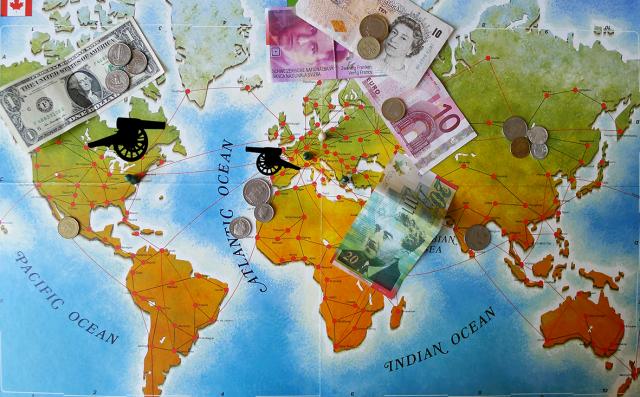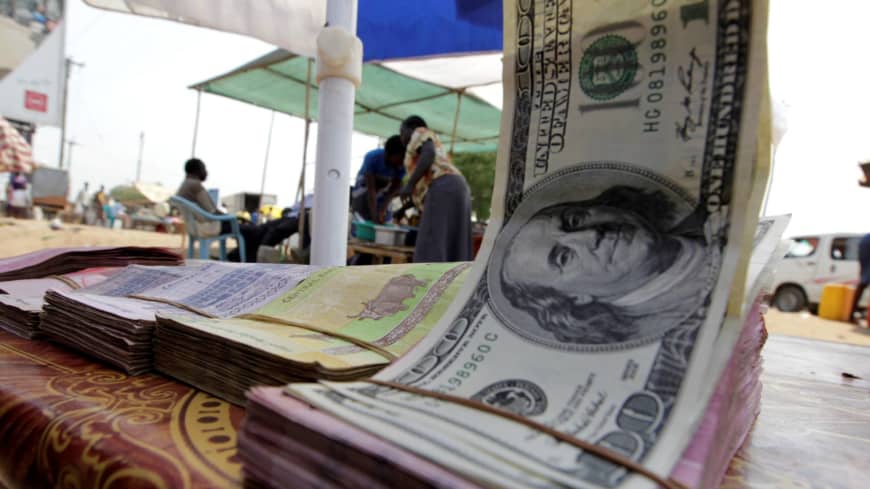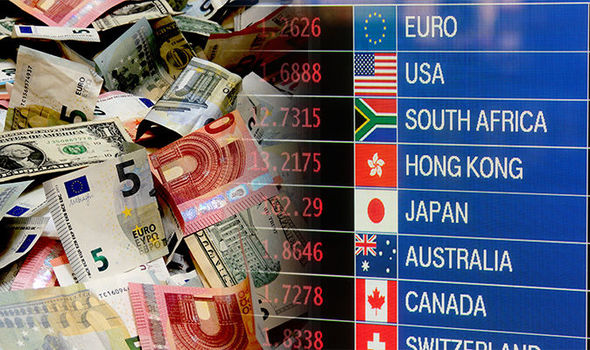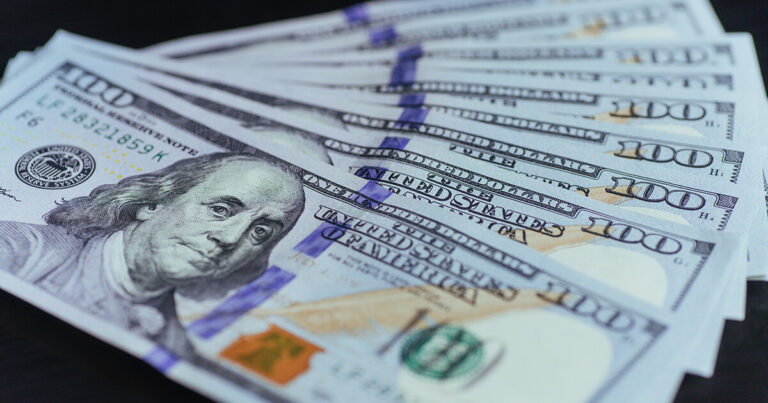
While the US dollar fell in the week, risk-on appetite uplifted the Asia Pacific currencies. A drop in the US 10-year treasury yields and positive economic data significantly led to risk-on appetite in the forex market. Other fundamentals in the currency market news also affected the financial performance of the g7 currencies.
Overall, New Zealand and Australian dollars emerged as top performers. And the American dollar and Swiss franc closed in the red.
Currency Market Drivers

Positive economic data and Treasury yields primarily impacted the performance of the forex market. Other currency market drivers included Geopolitical tensions, oil prices, and Coronavirus news.
Economic Updates
Except for Switzerland, the g7 economies and China posted more robust economic data suggesting a pickup in the global economy. Towards the end of the week, America, China, and Australia released impressive economic data, leading to massive gains by the riskier assets.
US 10 – Year Treasury Yields
In the week’s currency market news, the US 10-year Treasury yield dropped to a one-month low of 1.528%. A pickup in inflation pressure forced the treasury yield to decline. Despite a robust American economy, the yield dipped below a one-year high of 1.776 recorded at the end of last month. The drop in the treasury yield resulted in a strong rally of riskier assets towards the end of the week.
Coronavirus News
We also linked Johnson and Johnson’s coronavirus vaccine to the rare blood clot effect. This brought the number of vaccines marred with controversy to two. The Food and Drug Administration (FDA) warned Americans to stop using Johnson and Johnson’s vaccine following the death of a woman until further notice.
As of Sunday the 18th, global confirmed COVID-19 cases stood at 141 million. A significant proportion of these numbers are in the US, India, and Europe. Sadly, the death toll from the pandemic hit 3 million towards the end of the week.
New COVID-19 variants from South Africa and the UK led to the upsurge of the disease and increased hospitalization.
Geopolitics Tension Resurfaced
In the week, America introduced new sanctions on Russia for its alleged attempted interference in the US elections and cyber-attacks, among other charges. In retaliation, Russia expelled ten diplomats from the US. Moscow also vowed to bar some of the US senior officials from entering the communist state.
Trade tension between China and the US was also in focus. And Chinese Premier Li Keqiang urged the two nations to step up communication and end their differences. He also requested them to respect each other’s core interests.
Earlier in the week, Iran breached the 2015 Uranium Nuclear deal. It increased its uranium purity to 60%. And the US, Israel, and the United Nations condemned the act. Tehran’s nuclear breach added pressure on Joe Biden’s administration.
Crude Oil Forecast
According to Investing.com, oil prices ended the week stronger by 6.42%, uplifting commodity-related assets. The crude oil forecast was significantly affected by two factors: a drop in the US oil inventory and International Energy Agency (IEA) prediction.
IEA projected global oil demand to increase as more countries emerge from lockdown and vaccination rollout pickup.
G7 Currencies Performance And Economic Review
Table: g7 performance summary
| Currency pair | 12th April | 18th April | Average | Percentage Change | Remarks |
| USD | 92.144 | 91.544 | 91.765 | 0.668 | drop |
| GBP USD | 1.3740 | 1.3817 | 1.3783 | 0.7952 | increase |
| EUR USD | 1.1909 | 1.1968 | 1.1958 | 0.6094 | increase |
| USD CHF | 0.9224 | 0.9206 | 0.9215 | 0.4552 | increase |
| USD JPY | 109.37 | 108.78 | 108.93 | 0.84 | drop |
| USD CAD | 1.2561 | 1.2515 | 1.2529 | 0.0958 | drop |
| AUD USD | 0.7622 | 0.7733 | 0.7693 | 1.4696 | increase |
| NZD USD | 0.7028 | 0.7141 | 0.7105 | 1.5934 | drop |
What Happened To The Usd Currency?
The dollar ended a second week in the red. After a previous 0.90% drop, it dropped further by 0.66% to 91.556. From the onset of the week, usd currency traded in the red throughout the week.
Dovish FOMC meeting, economic data, geopolitics, and coronavirus pandemics drove the USD currency bearish run. The US weekly jobless claims continued to tumble, hitting the lowest level last week in more than a year. Impressively, US retail sales improved by 9.8%, much better than an earlier projection of a 5.9% increase.
The initial jobless claims declined from 769K to 576K. Earlier economists had projected the claims to reduce to 700K. Positive thought, inflationary pressure increased to 1.6% but had little effect on the currency market news.
Prelim figures show that the Philly manufacturing index dropped from 51.8 to 50.2 while the Michigan consumer sentiments index improved from 84.8 to 86.5. And according to Reuters, the US consumer prices increased by 1.6%, and food prices rose slightly by 0.4%.
On the geopolitics scene, the US strained relations with China, Iran, and Russia created negative global sentiments. The negative sentiments favour the safe haven currencies.
Gbp market news
At gbp market news, the pound closed the week up by 0.58% against the dollar after a previous 0.90% drop. Supported by trade data and production figures, the UK’s economy improved by 0.4%, partially recovering the previous 2.2% loss.
The trade deficit widened from 12.59 bn to 16.44 bn pounds, and manufacturing production increased by 1.3%. The UK was in a lockdown status but still posted an improved economic update. All this was boosted by increased exports and businesses adapting to the lockdown restrictions in place.
Eur usd prediction
Business sentiments, retail sales, industrial production, trade data, and industrial production drove eur usd prediction. Eurozone’s business sentiments dropped from 74.0 to 66.3, weighing heavily on the euro. However, the trade surplus widened from 11 bn to 17.7 bn euros, uplifting the eur usd currency pair.
Retail sales data improved tremendously, but industrial production figures disappointed. At the end of the week, inflationary pressure increased slightly but had a muted impact on the euro.
Chf to dollar
In Switzerland, all was quiet on the economic calendar, leading to poor performance of its currency. Without economic catalyst chf to dollar exchange rate was left to coronavirus news, geopolitics, and positive global sentiments.
The decline in the US 10 year treasury yield, improved global economy, and the continued vaccination rollout worked against the Swiss franc. By the close of the week, the Swiss franc dropped by 0.4542% to close at 0.9206 against the American dollar.
Usd To Cad Forecast
Canada had a relatively quiet economic calendar, leaving its currency performance to oil prices and Bank of Canada’s sentiments. Oil prices increased by 6.42% to uplift the Canadian dollar. Changes in oil prices directly impact the performance of the Lonnie.
Also, BoC sentiments affected usd to cad forecast, suggesting that business optimism was improving. But spikes in the coronavirus’s new case and more containment measures weighed on the optimism.
Canada’s employment figures improved by 634.8K because of eased restriction measures. At the end of the week, the Canadian dollar rose by 0.22%, following a 0.38% rally in the previous week.
How The Asia-Pacific Currencies Performed Against The USD

Aud analysis
Aud analysis shows that the Australian dollar rallied to post a three-week high last week. The Australian Westpac consumer sentiment index jumped by 6.2% to 118.8, the highest since August 2010.
Currency market news shows job creation surpassed expectations, dropping to a one-year low, with employment numbers beating the pre-pandemic levels. According to the Australian Bureau of Statistics (ABS), employment figures increased by 70.7K, thus lowering the unemployment rate to 5.6% from 5.8%.
Last week aud usd currency pair increased by 1.46% to settle at 0.7734.
Nz Currency To Usd
Last week, the nz currency to usd exchange rate increased by 1.57%. New Zealand’s central bank sentiments predominately uplifted the kiwi dollar. While leaving its current policy unchanged, the bank said the monetary stimulus would meet its inflation and employment target.
However, the bank indicated that it would continue monitoring tourism revival and new housing impact on New Zealand’s recovering economy. While continuing with the current NZ$100 billion stimulus program, the bank maintained the official cash rate (OCR) at 0.25%, a record low.
In other currency market news, New Zealand’s business confidence dropped by 13% in the first quarter. Also good to the kiwi dollar was the powerful surge in house sales, increasing by 24.3%.
How usd vs yen currency performed
According to usd vs yen currency market news, the Japanese yen grew by 0.79% to settle at 108.793 against the US dollar, significantly driven by economic data. While preliminary machine tool orders improved to 65% from 36.7%, core machinery orders fell by 8.5%.
And yearly, core orders declined by 7.1%. Ultimately, geopolitics tensions weakened the dollar, and new spikes in COVID 19 recent cases delivered yen support.
Conclusion

Except for the Swiss franc, the American dollar lost against the g7 forex currencies. Positive global sentiments, good economic data, and treasury yields in the week’s currency market news fueled the risk-on appetite.
The improving global economy, geopolitics, and coronavirus news will continue to drive the financial market for the coming months.
Related:




